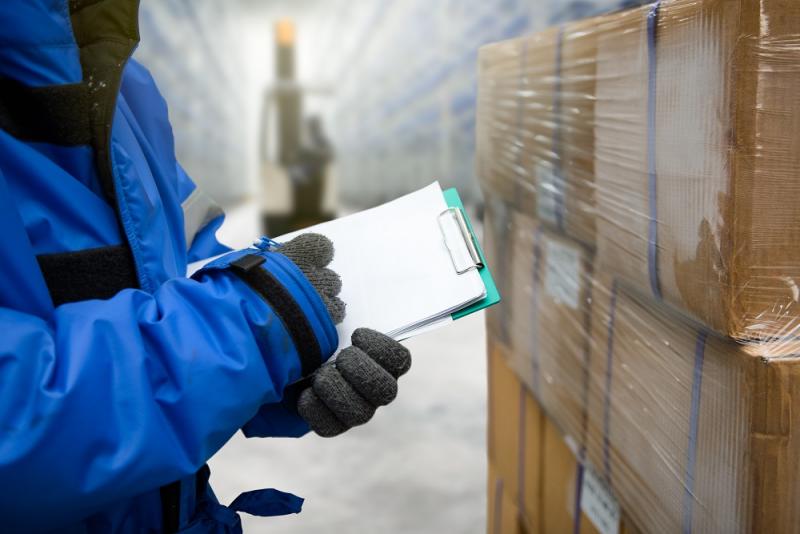
Industrial robots are replacing some of the more menial jobs in the average supply chain.
These robotic devices – often known as automated storage and retrieval systems, or AS/RS – are streamlining operations across many different industries.
Cold chain storage probably isn’t the first industry that comes to mind when thinking of advanced robotics or industrial automation. With such stringent requirements surrounding temperature control and the quality of cold products, consistent human interaction was always a necessity. With next-gen technology on the rise, the entire industry will see several key improvements.
Strengthening Accuracy in Staging and Picking
While human order pickers are rightfully concerned that robots will replace their jobs, automation ultimately enhances the typical supply chain in many different ways:
- Deadline-oriented staging: Automated systems are fully customizable and schedulable. They can also work around the clock to meet last-minute deadlines or ad-hoc requests.
- Accurate picking: Automation improves the accuracy of outbound shipment. Let’s face it: humans aren’t perfect. Even the most diligent employees are prone to making mistakes. Outside of any errors in their programming, robots will perform their duties flawlessly and without end.
But the supply chain revolution isn’t spurred on by AS/RS alone. It has a valuable partner in the Internet of Things – or IoT – and many of its benefits target the sector of cold chain storage.
Reducing the Risk of Contamination or Spoilage
Contamination and spoilage provide substantial challenges to the cold chain storage supply chain. According to Kroger’s CIO, Chris Hjelm, issues like drastic temperature changes, malfunctioning hardware and human error are all common.
His company recently adopted an IoT strategy to address such problems. Their new system – which utilizes the IoT – uses automation to monitor temperatures inside their freezers. If something is amiss, the system instantly generates an alert. Apart from preventing unnecessary contamination or spoilage, this saves employees from having to check the temperature twice per day.
Other industries depend on cold storage, too. The medical industry uses cold chain storage to facilitate drug testing and storage, mixing specific ingredients and handling human tissues before surgery. Many manufacturers – including those in automotive, clothing and metalworking – test or store their goods at low temperatures to ensure durability, longevity and freshness.
Grocers and manufacturers will adopt similar automated systems as the IoT becomes more mainstream. Not only will we see automation in factory and warehouse settings, but we’ll it in more public-facing positions like this. If a shopper accidentally leaves a freezer door ajar, the IoT can detect this – via automated sensors – and transmit an immediate alert.
Embracing the Cold Storage Warehouse
Long-term storage of frozen foods and other consumer products is one of the biggest challenges in the cold chain storage supply chain. Not only is this phase also prone to human error, but it requires extra attention due to the time-sensitive nature of frozen goods.
Once again, industrial automation has the potential to save the day. By automating processes like stock rotation, warehouses can ensure that they’re always distributing fresh items. RFID chips and scanners provide a way of tracking expiration dates, too, and automated picking systems can locate these expired goods for separation and eventual disposal.
According to Jeff Hedges, director or business development with HK Systems, companies with more than 8,000 pallet positions might reduce labor and energy costs by 60 percent to 80 percent by embracing the automated cold chain storage warehouse model. The increased automation also reduces the company’s footprint by as much as 50 percent.
Streamlining a warehouse layout and reducing floor space is just the start of things to come. By using innovations like data analytics and the IoT in tandem with industrial automation, manufacturers can reduce their long-term storage needs altogether. By accurately forecasting consumer habits, staging expected orders and capitalizing on recent trends, it’s possible to elevate the supply chain – and, by extension, the customer experience – to brand new heights.
How Automation is Finding its Way into Various Supply Chains
The effects of industrial automation and robotics are increasingly seen throughout our society. Whether it’s making sure a freezer door is closed at the local grocer or staging an order to save time and expedite delivery, automated systems are seemingly everywhere. It’s easy to write this off as another fad or trend, but make no mistake – automation has entered the modern supply chain and it’s here to stay.
Source: Manufacturing.net



